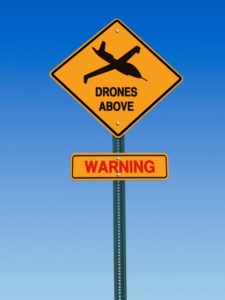More than 1200 safety occurrences – including near-misses between drones and aircrafts – were reported in Europe in 2016, which underlines the pressing need for a modern and flexible EU regulatory framework. The Commission is therefore calling on the European Parliament and the Council to agree on its proposal from December 2015 establishing an EU-wide framework for drones. Pending this adoption, the Commission’s Single European Sky Air traffic management Research Joint Undertaking (SESAR) – whose role is to develop the next generation of European Air Traffic Management – is today making half a million euro available to support the demonstration of “geo-fencing” services. Geo-fencing can automatically prevent drones from flying into restricted zones, such as the vicinity of airports.
 Commissioner for Transport Violeta Bulc said: “Drones offer tremendous opportunities for new services and businesses. That is why we want Europe to be a global leader. I am confident our modern and flexible regulatory framework will give rise to new European champions in this sector. But safety always comes first. If we don’t move fast enough, the near misses between drones and airplanes could one day have disastrous consequences. I am therefore calling on the European Parliament and the Council to swiftly agree on our proposal from December 2015.”
Commissioner for Transport Violeta Bulc said: “Drones offer tremendous opportunities for new services and businesses. That is why we want Europe to be a global leader. I am confident our modern and flexible regulatory framework will give rise to new European champions in this sector. But safety always comes first. If we don’t move fast enough, the near misses between drones and airplanes could one day have disastrous consequences. I am therefore calling on the European Parliament and the Council to swiftly agree on our proposal from December 2015.”
Ensuring that drones can safely integrate the airspace alongside other users (such as aircraft) is fundamental. This is why the Commission proposed in November 2016 to create an automated traffic management system for drones operating at low-level, referred to as the “U-space”. Geo-fencing is a key component of the U-space.
The call for proposals announced today by SESAR aims to select one project demonstrating the active geo-fencing of drones flying below 500 feet (around 152 meters). It requires that drones users are provided with up-to-date information on no-fly zone as well as real-time alerts if they enter one. The project will build on the geolocation capabilities which are built-in in many drones today.
Today’s funding comes on top of an envelope of 9 million euros that has already been earmarked for exploratory projects to speed up the development of the U-space, such as the automatic identification of drones or drone-to-drone communication.
Background information
In December 2015, the Commission proposed to create an EU-wide framework for drones as part of its Aviation Strategy. It tabled a legislative proposal establishing standards for drones and drone operations, which is still being examined by the European Parliament and the EU Member States.
In addition, it is necessary to ensure that drones can safely integrate into the airspace. Following the Commission’s proposal to create the U-space, the Single European Sky Air traffic management Research Joint Undertaking (SESAR) produced a “blueprint” fleshing out the concept. Geo-fencing is one of the basic principles identified. It uses satellite positioning to create a virtual geographic boundary and automatically prevent drones from flying close to certain areas, such as airports.
Over the past years, an increasing number of ‘near misses’ – where a drone flies very close to a civilian aircraft – has been recorded across Europe. While it is very difficult to collect reliable data, evidence from the European Aviation Safety Agency (EASA) suggests that there could have been more than 2100 safety “occurrences” involving drones between 2010 and 2016. Of these, 1200 were recorded in 2016 alone. More information is available here.
The funding which is announced today has been requested by the European Parliament as a specific preparatory action. It will last for 15 months. More information is available here.
More information
An Aviation Strategy for Europe
Source: The European Commission